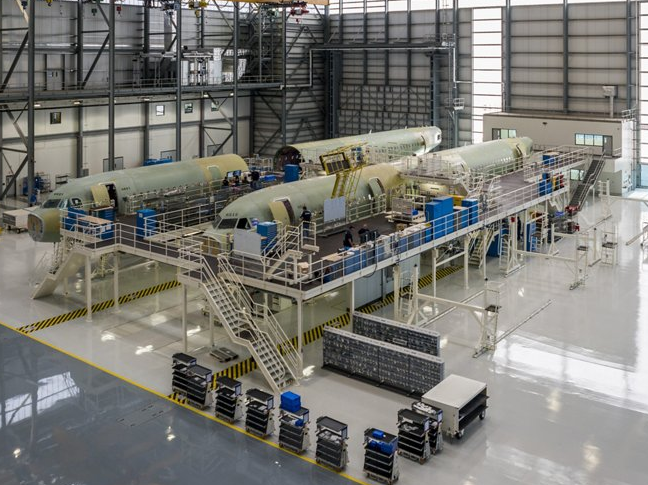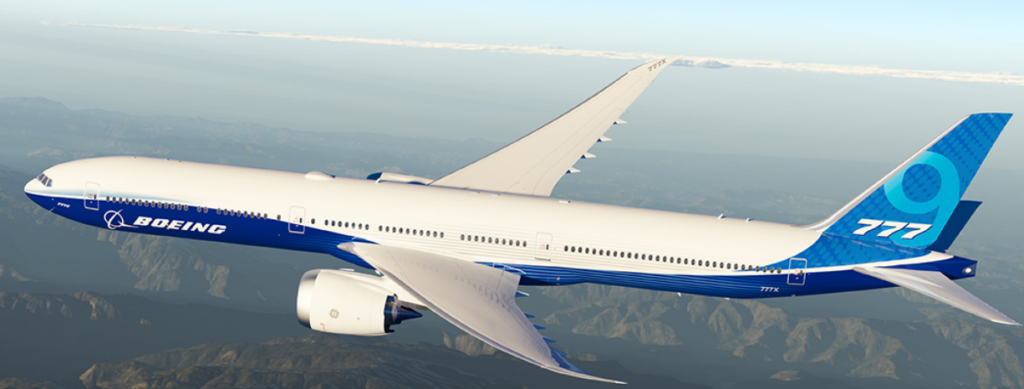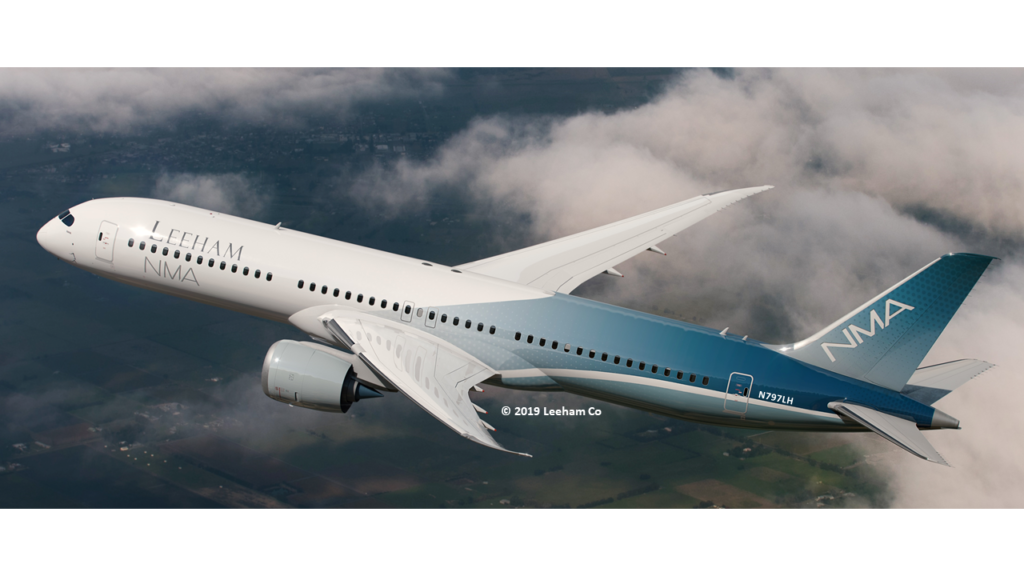Leeham News and Analysis
There's more to real news than a news release.
Pontifications: Outlook 2021 Series begins today
Jan. 4, 2021, © Leeham News: Beginning today through next week, Leeham News presents its annual Outlook series for the coming year.
We’ve been doing this for years. In recent years, the Outlook reflected continued growth in commercial aviation. The industry had the longest upward tick in the more than three decades I’ve been involved in the sector.
Not this year. As I wrote before the Christmas-New Year’s holiday period, 2020 was the worst year for commercial aviation I’ve ever seen in 41 years.
This year is the beginning of the end of the COVID crisis. Yes, the vaccines began distribution in December, but large spikes in COVID cases began simultaneously and are predicted to climb higher through the first quarter.
Over the coming days, as LNA provides its Outlook for 2021, readers will see what we believe will happen.
Outlook 2021: Despite vaccines, COVID-19 will continue to dominate aviation in the coming year
Subscription Required
By Judson Rollins
Introduction
Jan. 4, 2021, © Leeham News: Recent approval of two major vaccine candidates are driving euphoria among aviation investors, employees, and travelers. Many commentators are talking about a “return to normal” later this year.
Alan Greenspan’s famous phrase, “irrational exuberance,” comes to mind. Vaccine approvals provide reason for hope, but not in the near term. Even Singapore’s government, one of the world’s most efficient, says it will need most of 2021 to fully vaccinate its population.
On the other end of the economic spectrum, Duke University’s Global Health Institute says low-income countries may have to wait until 2024 if high-income countries continue to reserve vaccines for their own populations.
Pharmaceutical giants Pfizer, Moderna, and AstraZeneca, which have released efficacy data on their vaccines and are now obtaining approval from various jurisdictions, announced a combined capacity to produce vaccines for up to 3.1bn people by the end of 2021. China’s Sinovac claims it will be able to produce 600m doses, but it is still evaluating the efficacy of its vaccine candidate.
Summary
- Reluctance to take vaccine likely to slow rollout
- Borders re-opening depends on rollout, proof of vaccination
- Pre-travel testing may be a dubious solution
- Business, leisure travel likely to be permanently impacted
- Airline financial woes likely to continue
- New aircraft demand will stay low in 2021
US to tax fuselage, wings, tail imported for Airbus’ Mobile A320 assembly line
Dec. 31, 2020, © Leeham News: Airbus’ A320 Mobile (AL) plant is no longer exempt from tariffs applied by the US Trade Representative in the 16-year long trade war with the European Union.

The fuselage, wings and tail components for the Airbus A320/321 final assembly in Mobile (AL) will be taxed by the US, effective Jan. 12. These have been exempt up to now. Photo source: Airbus.
Effective Jan. 12, the US will slap a 15% tax on fuselage, wing and tail components shipped from France and Germany to Mobile for final assembly on A320s and A321s.
This is a setback in what appeared to be progress in resolving at long last the trade war over subsidies to Airbus deemed illegal by the World Trade Organization.
The US also will apply tariffs on helicopter parts imported from France and Germany for Airbus assembly sites in Mississippi and other US locations.
Podcast: 10 Minutes About Future Workforce Requirements
Dec. 30, 2020, © Leeham News: How many airline workers and aerospace manufacturing-supply chain workers have been laid off, voluntarily or involuntarily, in the pandemic?
Even before the pandemic, airlines faced an aging pilot workforce and regional airlines had difficulties finding and retaining pilots. The aging pilots get older during the layoffs. What kind of shortages will there be as the industry recovers over the next few years?
Kathryn Creedy, who writes for Leeham News and is editor of her own on-line newsletter, Future Aviation/Aerospace Workforce News, answers these and more questions in this episode of 10 Minutes About.
HOTR: Alaska Air still have A320neos on order; working with Airbus on best path forward
Dec. 29, 2020, © Leeham News: Stories and headlines shouted that this month’s Boeing order by Alaska Airlines adding 23 orders and 15 options to an existing agreement meant the death knell for the Airbus fleet.
Alaska indeed announced that all the A319s and A320s inherited from its acquisition of Virgin America will leave the fleet by 2024. But 10 Airbus A321neos remain at least through their lease terms in 2029.
The airline now has 68 Boeing 737 MAX 9s on order and 52 on option.
This is exactly as LNA suggested several times: rotate out the smaller Airbuses as leases expire and keep the larger A321neos.
COVID-19 accelerated the retirement of the smaller Airbus family members by a couple of years. But it never made sense to keep them in lieu of the 737-9 once Alaska committed to this plane several years ago.
But what of the old Virgin America order for 30 A320neos? These are still on the books.
Podcast: 10 Minutes About the Boeing 777X777X, Vincent Valery
Dec. 28, 2020, (c) Leeham News: Today LNA discusses 10 Minutes About the Boeing 777X.
Something that should have caught Boeing’s attention at the time of the 777X launch was the lack of interest from two key customer groups: the 777-300ER launch operator, Air France, and US airlines. The lack of orders from such airlines was perhaps a sign of a market smaller than what  Boeing would have envisioned.
Boeing would have envisioned.
The discussion today looks at the program status and whether Boeing might cancel it. Scott Hamilton is joined by Vincent Valery, a writer and financial analyst for LNA.

Boeing rendering.
Boeing should build 757 replacement in Washington
Commentary
Dec. 22, 2020, © Leeham News: If you get a chance over the next few weeks – in between binge-watching The Queen’s Gambit, putting up the 79 extra feet of Christmas lights you ordered this year and figuring out how to buy surprise Christmas gifts for your spouse when you have a joint Amazon account – you should take 90 minutes to watch this video from our friends at the International Association of Machinists District Lodge 751.
The Machinists on Dec. 8 hosted (on Zoom, of course) a high-level panel discussion about the state of the aerospace industry and Washington state’s role in it, featuring a whole bunch of Brand-Name People Who are Smarter Than Me(c).
They shared their insights for those of us coffee-drinkers who are trying to read the tea leaves to divine what Boeing’s next moves should be as it tries to get back on its feet – and what the implications are for its home state.
The takeaway:
The problems for Boeing are obvious, and the solutions are pretty clear – but doing the smart thing would require a major cultural shift from an executive team that’s locked into a 1990s vision of how business gets done.
- Boeing needs a 757 replacement this decade
- It should get built in Washington state
- There are concrete – and audacious – steps for the state to take
- Can GE alum Calhoun change Boeing’s GE culture?
Senate report reveals FAA retaliation, hostile culture
Subscription Required
By Scott Hamilton
Introduction
Dec. 21, 2020, © Leeham News: The US Senate Commerce, Science and Transportation Committee Friday issued a damning report taking Boeing and the Federal Aviation Administration to task.
A 20-month investigation began in the wake of the two Boeing 737 MAX crashes in October 2018 and March 2019.
The report concluded Boeing inappropriately coached the FAA pilots during recertification simulator training to test fixes to the now-infamous MCAS system.
Details were widely reported last week.
More troubling is the larger picture painted by the Committee of an FAA for years ignoring several US airlines’ safety violations and attempts by FAA inspectors to enforce safety regulations.
Whistleblowers were subject to retaliation, Committee investigators found. The FAA and its parent agency, the Department of Transportation, refused to make FAA employees available for interviews and stonewalled when documents were requested.
The bigger picture of an agency that protects airlines more than the public raises questions of a culture that favors cozy relationships with airlines. Media reports focused on the Boeing-FAA relationship and not the larger issues.
Summary
- Restoring confidence in FAA certification with other regulators.
- US Congress crafts FAA reform bill.
- 777X is next up
- The full report is here: CST FAA Aviation Safety Oversight Report






